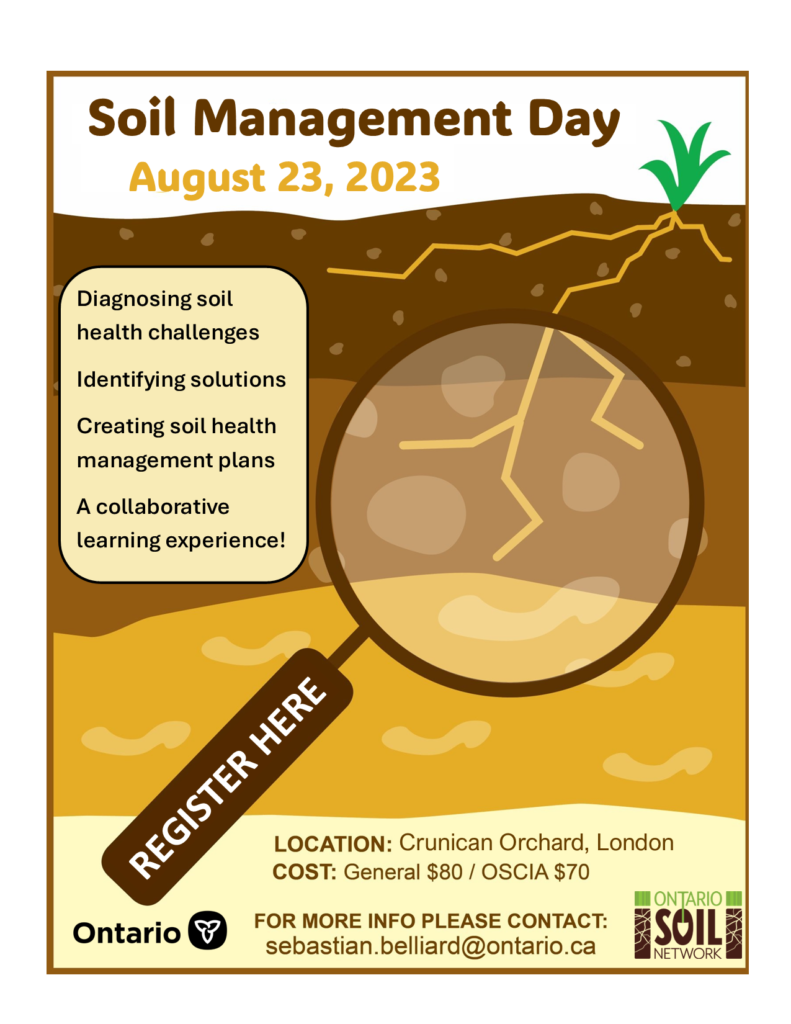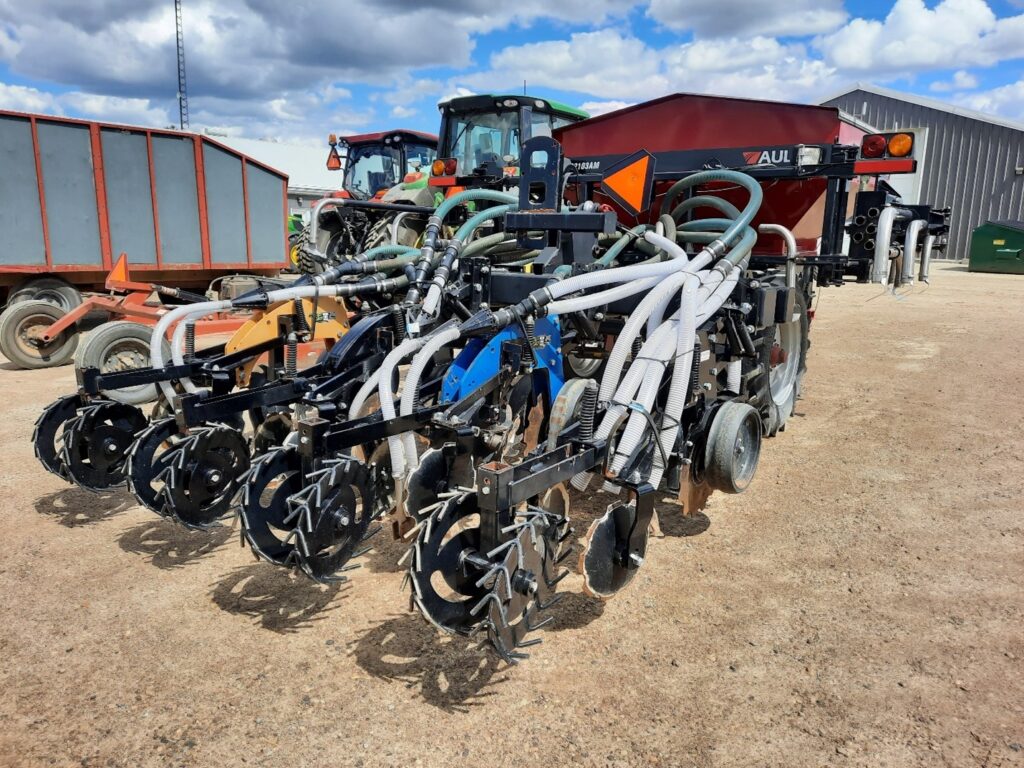Crop Report – Week of July 8, 2024

Rain 360© unit applies watery manure to a standing crop of corn (Photo source from Glen Arnold-OSU). […]

Rain 360© unit applies watery manure to a standing crop of corn (Photo source from Glen Arnold-OSU). […]

Summary: Background: Throughout the growing season, microbes within the soil break down organic nitrogen contained in soil organic matter and crop residues and release it as plant-available ammonium. This process is known as nitrogen mineralization. Nitrogen mineralization is favoured by warm soil temperatures with adequate soil moisture and aeration. Excess moisture can slow mineralization or […]
The Ontario Corn Nitrogen Calculator can be accessed by clicking the icon below. (this is the same tool previously posted on gocorn.net) Simple Summary The Corn Nitrogen Calculator Ontario Corn Nitrogen recommendations are derived from the Ontario corn nitrogen database which contains over 40 years of Ontario corn nitrogen yield response data. Current recommendations were […]
The Ontario optimum corn N-rate estimator tool can be accessed by clicking the icon below. (this is the same tool previously posted on gocorn.net) Simple Summary The Optimum N-Rate Estimator Tool If you’ve wondered what the optimum corn nitrogen (N) rate is on your farm but don’t want to go to the trouble of applying […]
The Ontario manure nutrient calculator tool can be accessed by clicking the icon below. (this is the same tool previously posted on gocorn.net) Simple Summary Ontario Manure Nutrient Calculator What is the nutrient value of the manure I plan to apply? How does time of year or timing of incorporation impact my manure nitrogen credit? […]

Frequent rains and wet soils across the province have slowed or prevented field work. Soil compaction is likely to be an issue this year, especially for farmers trying to get manure spread ahead of spring planting. Fertilizer has been moving out to farms with storage. Retailers are full and ready to apply product once soil […]

A warmer than normal winter coupled with dry weather through February has led to surprisingly good field conditions in much of southern Ontario. While it looks like it could be an early spring, we know that the weather can change rapidly this time of year. Some are questioning whether it makes sense to take advantage […]

Join the OMAFRA Soil Team and the Ontario Soil Network in London for a full day of collaborative learning. Dive deep into diagnosing and finding solutions for real soil health challenges in a real field! Share learnings and experiences with other soil health professionals, and pick up a great new ideas along the way. A […]

Recent rainfalls have brought about an abrupt change to soil conditions in some Ontario fields in just a few short weeks ago. Localized heavy rainfalls have left some fields with standing water in low-lying areas, while many fields are wet or saturated. This has raised questions about the potential losses of nitrogen (N) for the […]

Summary Background Throughout the growing season, microbes within the soil break down organic nitrogen contained in soil organic matter and release it as plant-available ammonium. This process is known as nitrogen mineralization. Nitrogen mineralization is favoured by warm soil temperatures with adequate soil moisture and aeration. Excess moisture can slow mineralization or increase the potential […]
Split application of nitrogen (N) in corn has been shown to offer many benefits to farmers, including a reduction in the total N required to produce a high-yielding crop. In-season application matches N supply closer to corn’s uptake pattern, and because of this, there is less nitrogen sitting in the soil in forms available for […]

There is a shared responsibility for balancing more sustainable cropping practices with profitability. We know that improving nitrogen (N) management is important for the environment and on-farm economics, and we have reviewed a number of studies to guide on-farm practices to help reduce greenhouse gas (GHG) emissions. The simple answer Yes, you can significantly increase […]
It is difficult to manage what you don’t know. Sampling manure will provide information to help determine nutrient availability and determine where commercial fertilizer may or may not still be required. The link gives greater details about sampling and interpreting the results from manure samples. […]
The value from manure comes in the nutrients provided along with other components that benefit soil health. Manure adds a layer of complexity to fertilizer management, but it also provides benefits to crops that commercial fertilizer on its own cannot provide. Research helps with understanding the principles of how nutrients behave in different environments and […]

Simple Summary there is limited guidance for safe fertilizer rates for strip till – unlike 2”x2” planter banding, there are many different fertilizer placement options in strip till there is likely some tradeoff with fertilizer placement in strip till – placement closer to the seed likely improves starter fertilizer effect and fertilizer efficiency, but likely […]